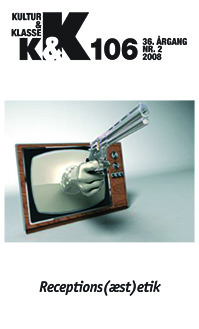En leg med æstetik og etik: Om filmen De fem benspænd
DOI:
https://doi.org/10.7146/kok.v36i106.22029Nøgleord:
Leg, æstetik, etik, film, De fem benspændResumé
A Game with Aesthetics and Ethics: On the Film The Five Obstructions:
In this article my approach is to analyse what kind of ethics is implied in the experimental documentary film The Five Obstructions (2003) made by the Danish directors Lars von Trier and Jørgen Leth. What are the consequences for Leth when Trier tries to push him into making a miserable and ugly film through the help of certain rules that Leth would never have invented himself? What are the consequences for the citizens when Leth chooses to create a scene in the Red Light District in Mumbai? And how is the audience supposed to respond to this unusual film, in which Leth is creating five new interpretations of the short fiction film The Perfect Human Being (1967)? My answers to these questions will be that the life of the prostitutes in the Red Light District will carry on as usual after Leth has left this area. For Leth the constraints given to him by Trier have worked as a kind of ‘scaffolding’ (Wood, Bruner and Ross, 1976) and have inspired him to innovate in his own filmmaking. Concerning the audience of the film, they will be forced to judge for themselves whether they agree with the moral that Trier and Leth use in the film and what kind of ‘ethos’ this produces. Leth is going through an interesting development in The Five Obstructions, but this is certainly not the direction that Trier initially hoped he would take. The short films Leth creates – as demonstrated in the film as a whole – are primarily influenced not by the ethical approach from Trier, but by the scaffolding he offers Leth.
Downloads
Publiceret
Citation/Eksport
Nummer
Sektion
Licens
Tidsskriftet følger dansk ophavsret.





